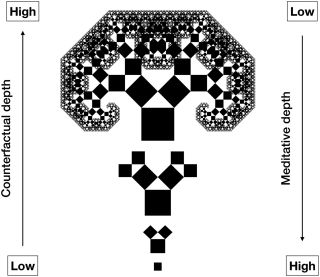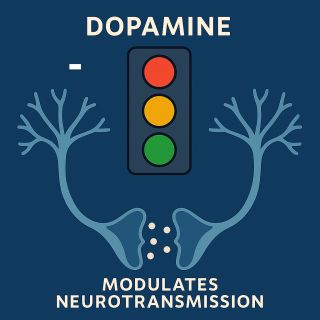Mindfulness & Mental Health
7 Proven Strategies for Happier Work in 2025
Most of us don’t need a new mug or ping-pong table—we need a workday that doesn’t drain our life. In 2025, creating happier work comes down to three things: feeling satisfied, feeling that your work matters, and feeling mentally energized by what you do. This guide breaks down a practical, science-backed framework you can start applying today.
The Real Problem: Why Work Feels Heavier Than Ever
Modern work promises flexibility, purpose, and growth, yet many professionals still feel stuck, unseen, or exhausted.
Common warning signs your work life is misaligned:
- You start Sundays with a sense of dread.
- You feel your skills are underused or unnoticed.
- Meetings feel endless, but progress feels vague.
- You’re busy all day, but rarely proud of what you finished.
Recent global surveys show rising burnout and disengagement despite well-being initiatives. When work consistently drains more energy than it gives back, both performance and mental health suffer.
"Happier work is not a perk. It’s a psychological requirement for sustainable performance."
Why Traditional “Happiness at Work” Advice Fails
Most advice focuses on surface-level fixes:
- Casual Fridays instead of clear expectations.
- Mindfulness trainings without workload changes.
- Vision statements about purpose no one can see in their daily tasks.
These approaches fail because they don’t address how people actually experience their jobs moment-to-moment. Without real autonomy, visible impact, and psychological safety, initiatives feel cosmetic—and can even increase cynicism.
The Root Causes (Backed by Current Research)
Recent work psychology research, including studies summarized by Zacher & Baumeister (2025), and broader findings from leading institutions (Harvard, 2024; Stanford researchers), point to three core pillars of a fulfilling work life:
- Satisfaction (Hedonic well-being): Feeling good about your workdays.
- Meaningfulness (Eudaimonic well-being): Believing your work matters.
- Psychological richness: Experiencing variety, challenge, and growth.
When these three are present, people report higher motivation, resilience, and engagement—even when work is demanding. When they’re missing, even “easy” jobs feel heavy.
The Framework: The Three Pillars of a Happier Work Life
Think of happier work as the intersection of three experiences you can intentionally design.
1. Job Satisfaction: The Feel-Good Foundation
Job satisfaction is your emotional and cognitive "gut check" about work.
You’re likely satisfied when:
- You experience regular positive emotions (pride, calm, interest).
- Your workload feels challenging but manageable.
- You feel fairly treated and recognized.
Quick self-check:
- Do I end most days feeling I accomplished something meaningful?
- Do I genuinely enjoy at least 30-40% of my daily tasks?
2. Work Meaningfulness: Doing What Matters
Meaningfulness is feeling that your work has real-world impact, aligned with your values.
Indicators of strong meaning at work:
- You see how your tasks help customers, patients, users, or your community.
- You feel connected to something larger than your to-do list.
- You’d be proud to explain your work to someone you respect.
Even roles that seem routine—like payroll, customer support, or operations—can feel deeply meaningful when their impact is made visible.
3. Psychological Richness: Keeping Your Work Mentally Alive
Psychological richness comes from novelty, complexity, and perspective shifts in your work.
You’re experiencing richness when:
- You solve new types of problems.
- You interact with diverse people and ideas.
- You collect stories from your job that change how you see the world.
This pillar explains why some demanding roles feel energizing instead of draining: they stretch your thinking without leaving you powerless.
The "Elite 6": Core Conditions That Drive Happier Work
Zacher & Baumeister (2025) and decades of organizational research highlight six powerful drivers that shape satisfaction, meaning, and psychological richness. Use them as your personal checklist and as a leadership blueprint.

1. Perceived Contribution: See Your Impact Clearly
When you understand how your tasks connect to outcomes, your work feels more worthwhile.
Ways to strengthen perceived contribution:
- Trace your tasks to the final product, service, or user.
- Ask your manager: "Where does my work make the biggest difference?"
- Request visibility into metrics or stories that show impact.
Key insight: Employees who clearly see their impact report higher satisfaction and commitment, even under pressure.
2. Participation: A Voice in How Work Gets Done
Feeling informed and heard fuels belonging and control.
Build real participation by:
- Involving teams in decisions that affect their workload.
- Running structured feedback loops on processes and tools.
- Sharing context, not just instructions, so people can make smart choices.
When people participate, they’re less alienated and more engaged—this is consistently shown across organizational democracy research.
3. Development Opportunities: Growth as a Non-Negotiable
Growth signals that today’s effort improves tomorrow’s possibilities.
Simple, realistic development actions:
- Block 1–2 hours per week for a new skill or tool.
- Rotate responsibilities on projects to stretch different strengths.
- Propose a micro-internal apprenticeship (shadowing a role you’re curious about).
Employees who keep learning report higher satisfaction, stronger meaning, and richer work experiences.
4. Supervisor Support: Leadership That Actually Supports
Supportive leadership isn't about being "nice"; it's about backing people with clarity and care.
Signals of strong support:
- Clear expectations and priorities.
- Regular, specific feedback (not just once a year).
- Protection from unrealistic demands or undermining behavior.
A supportive supervisor helps transform stress into challenge instead of threat, which is crucial for happier work.
5. Coworker Support: Everyday Micro-Community
Colleagues shape your daily emotional climate.
To cultivate supportive peer dynamics:
- Normalize quick check-ins: "Need a hand with that?"
- Celebrate small wins publicly.
- Call out undermining behavior early and clearly.
Supportive coworkers don’t just boost satisfaction; they can make work more psychologically rich by encouraging you to tackle new challenges.
6. Job Engagement: Invested, Not Consumed
Engagement is how much mental, emotional, and physical energy you’re willing to bring to your role.
Sustainable engagement thrives when:
- You have autonomy over how you work.
- You see progress toward meaningful goals.
- You’re stretched, but not chronically overloaded.
Happier work both fuels and is fueled by healthy engagement.
The Hidden Stressors Quietly Draining Your Well-Being
Several factors consistently undermine well-being at work:
- Qualitative workload: tasks too complex without proper resources.
- Quantitative workload: constant time pressure and task overload.
- Work interruptions: frequent pings, meetings, and context switching.
- Environmental stressors: noise, poor ergonomics, bad lighting.
- Undermining behavior: subtle hostility, public criticism, exclusion.
- Job insecurity: fear your role may disappear.
- Extended working hours: especially when misaligned with values or impact.
Research shows:
- Job satisfaction usually drops under high stressors, except when people genuinely enjoy and value their work.
- Meaningfulness is surprisingly resilient; people may tolerate more load if they believe their work truly matters.
- Psychological richness can increase with challenge and complexity, but without support it can slide into burnout.
The goal is not a zero-stress job, but the right balance of challenge + support + control.
People Also Ask: How Do I Become Happier at Work?
How can I be happier at work quickly?
In the next 7 days, focus on three shifts:
- Clarify your top 3 priorities with your manager.
- Improve one friction point in your environment (notifications, workspace, schedule).
- Capture one impact story per day—a person or outcome your work helped.
These quick wins build momentum toward a more consistently happier work experience.
What makes a job truly meaningful?
A job feels meaningful when:
- It aligns with your personal values.
- You see a clear benefit to others.
- You have some choice in how you contribute.
Even if your title doesn’t sound "mission-driven," making your impact visible and connecting it to your values can transform your day-to-day experience.
Can I feel happier at work without changing jobs?
Yes. Often you can redesign parts of your current role.
Try:
- Job crafting: add, tweak, or swap tasks to better use your strengths.
- Relationship crafting: spend more time with energizing colleagues.
- Cognitive reframing: consciously link your tasks to bigger outcomes.
If you see zero room to influence any of these, that itself is valuable data about your next move.
Does working longer hours always reduce happiness?
Not always. Research suggests that when work is enjoyable and meaningful, slightly longer hours don’t automatically reduce satisfaction. Problems arise when long hours are paired with low control, unclear goals, or toxic dynamics. Focus first on improving quality of work time before only cutting quantity.
Step-by-Step: How to Design Your Own Happier Work Plan
Use this 7-step process to apply the framework practically.
Step 1: Audit Your Current Experience
In one sitting, rate each (1–5): satisfaction, meaning, psychological richness, perceived contribution, participation, support, engagement.
Write:
- Three things that energize you.
- Three things that drain you most.
Step 2: Define Your Non-Negotiables
Choose 2–3 non-negotiables for happier work for the next 90 days, such as:
- "I need clearer priorities each week."
- "I need at least one growth opportunity per month."
- "I won’t accept constant public criticism."
These guide your conversations and decisions.
Step 3: Craft Your Role Around Strengths and Impact
Implement small, realistic changes:
- Volunteer for tasks aligned with your strengths.
- Drop or streamline one low-impact recurring task.
- Ask: "Where could my skills solve a problem we keep ignoring?"
This increases both satisfaction and perceived contribution.
Step 4: Build a Support System at Work
- Schedule a monthly 1:1 with your manager focused on support and priorities.
- Identify 2–3 colleagues as your "ally circle" for feedback and brainstorming.
- Offer help before you need it; reciprocity builds strong micro-communities.
Step 5: Make Stressors Visible and Negotiable
Select one stressor to address first.
Examples:
- Too many interruptions: batch communication times, suggest meeting-free hours.
- Overload: ask, "What should I deprioritize to do this well?"
- Environmental issues: adjust your setup or request reasonable improvements.
Aim for one tactical adjustment per week, not a full overhaul overnight.
Step 6: Inject Psychological Richness Intentionally
Keep your work mentally alive without burning out:
- Take on one new type of problem or project each quarter.
- Rotate meeting roles (facilitator, note-taker, challenger) to build new skills.
- Join a cross-functional team to see the bigger picture.
Step 7: Track Micro-Wins and Adjust
Every Friday, note:
- 1 moment of satisfaction.
- 1 meaningful outcome.
- 1 rich or interesting experience.
This 3-line ritual trains your brain to notice progress and shows whether your changes are working.
Real-World Examples (2025 Context)
- A customer success lead redesigned her week: fewer generic meetings, more time solving complex client issues. Result: higher psychological richness and recognition, without changing companies.
- A hospital admin team created a "patient impact board" with weekly stories from the wards. Clerical staff reported stronger meaning and reduced turnover.
- A remote engineering squad introduced meeting-free Wednesdays and rotating project ownership. Output went up, burnout risk went down, and developers reported significantly happier work days.
These shifts were small, but they targeted the right levers: impact, voice, growth, and support.
What Results to Expect (And When)
If you apply these strategies consistently:
- Days 7–14: Notice slightly clearer focus and fewer energy leaks.
- Weeks 3–4: Stronger sense of control, better mood at the end of the day.
- Weeks 6–8: Clearer meaning, more confidence to set boundaries and seek growth.
- 3–6 months: A distinctly more sustainable, happier work experience—or a clear, empowered decision to pursue a better-fit role.
If nothing improves after honest effort to adjust your environment and role, the data is telling you: your well-being may require a bolder change.

Troubleshooting: When Happier Work Still Feels Out of Reach
If you’ve tried these steps and feel stuck, check for these blockers:
- Chronic disrespect or bullying.
- No influence over workload or priorities, despite asking.
- Values clash with the organization’s core behavior, not just policies.
Consider:
- Documenting patterns and seeking HR or trusted leadership support.
- Exploring internal moves more aligned with your strengths.
- Planning an exit strategy that honors your mental health and financial reality.
Happier work is not about forced positivity. It’s about designing conditions where satisfaction, meaning, and psychological richness can coexist—and where your work life genuinely supports the life you’re trying to build.





